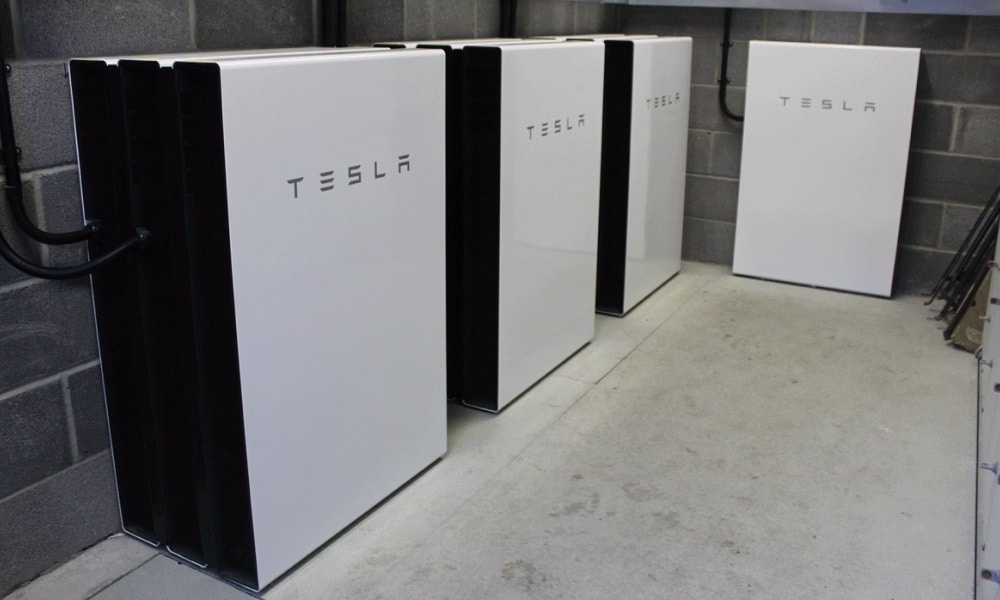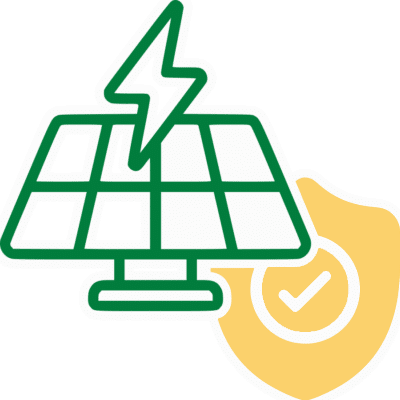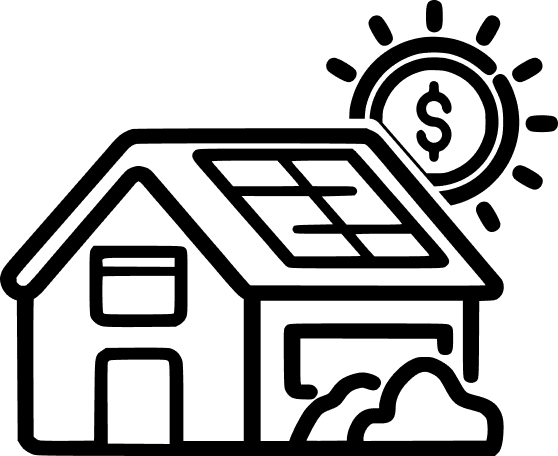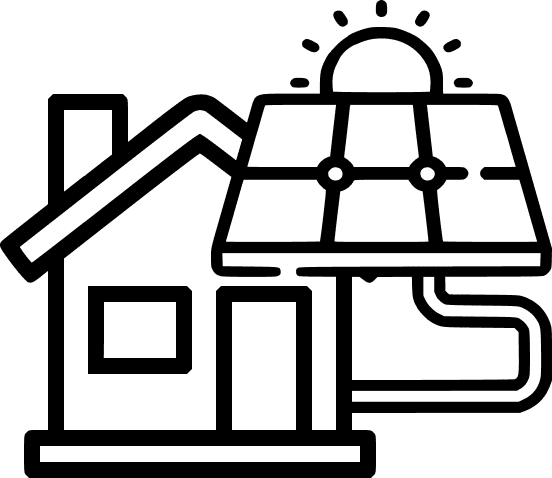
The patented technology used in our solar panels ensures maximised efficiency – even in low light – which means greater savings for our clients year round.

Research shows consumers are 100 times more likely to return a standard panel over a SunPower Panel, a testament to their quality.

The most comprehensive warranties available on the Australian market, with a full 40 Year Warranty and no hidden fine print.
Brands
Experience Elegance and Power with the Tesla Powerwall 2
Unleash the power of renewable energy in your Adelaide home with the Tesla Powerwall 2. This innovative home battery solution harnesses the sun’s energy and stores it for when you need it most.
With a sleek design, compact size and 10 year warranty, the Powerwall 2 seamlessly integrates into your home, providing reliable and clean power during grid outages or peak energy demand.
Through intelligent software that optimises energy usage and maximises self-consumption you can reduce reliance on the grid.
Join the energy revolution and take control of your power supply with the Tesla Powerwall 2 today.

Tesla Powerwall 2: An Overview
This is currently the only model available in the Powerwall series, offering a powerful option for homeowners in Adelaide looking for solar battery storage solutions.
With its advanced features, high energy capacity, and reliable performance, the Powerwall 2 is designed to meet the energy needs of your household efficiently. Its intelligent software enables seamless integration with solar panels, optimising self-consumption and reducing reliance on the grid. Additionally, the sleek design and compact size of the Powerwall 2 make it suitable for installation in various homes.
How Much Does Tesla Home Battery Cost?
The cost of a Tesla home battery can vary depending on various factors such as installation requirements, additional components, and any applicable taxes or fees while the retail price of a standalone unit sits between $15,000 to $20,000.
Keep in mind, additional expenses such as installation, permits, and supporting hardware can influence the overall cost.
Tesla Powerwall 2 Benefits
✔ Energy Independence: The Powerwall 2 allows you to store excess solar energy generated during the day and use it during the evening or during power outages, reducing your reliance on the grid.
✔ Lower Electricity Bills: By utilising stored solar energy during peak times or when the grid rates are high, you can reduce your electricity bills significantly.
✔ Backup Power: During grid outages, the Powerwall 2 provides a seamless transition to backup power, ensuring your essential appliances and devices continue to operate.
✔ Time-of-Use Optimisation: The intelligent software of the Powerwall 2 can analyse and optimise energy usage, automatically drawing power from the battery when grid rates are high, saving you money.
✔ Sustainable Energy Solution: By integrating Powerwall 2 with solar panels, you can maximise self-consumption of clean, renewable energy, reducing your carbon footprint and contributing to a sustainable future.
✔ Compact Design: The sleek and compact design of the Powerwall 2 allows for flexible installation options, making it suitable for homes with limited space.
✔ Remote Monitoring and Control: You can monitor and control your Powerwall 2 system remotely through the Tesla app, allowing you to manage energy usage and check battery status anytime, anywhere.
Tesla Powerwall 2 Installation Process
The installation process for a Tesla home battery typically involves the following steps:
Step One: Consultation
Begin by contacting Tesla or an authorised installer to discuss your specific energy needs, evaluate your home’s suitability for installation, and determine the optimal placement for the Powerwall 2 unit.
Step Two: Site Assessment
A site visit may be scheduled to assess the electrical setup, available space, and any necessary upgrades or modifications required for the installation.
Step Three: Permits and Approvals
Obtain any required permits or approvals from local authorities or utility companies. Your installer can guide you through this process.
Step Four: Electrical Upgrades (if necessary)
If your electrical system needs upgrades or modifications to accommodate the Powerwall 2, an electrician will perform the necessary work to ensure compatibility and safety.
Step Five: Powerwall Installation
Once the electrical system is ready, the Powerwall 2 unit will be mounted securely on a wall in the designated location. The unit will be connected to your home’s electrical panel and integrated with your solar system (if applicable).
Step Six: Testing and Configuration
After installation, the system will be thoroughly tested to ensure proper functionality and connectivity. The Tesla mobile app will be configured to allow you to monitor and control your Powerwall 2 system remotely.
Step Seven: Final Inspection and Activation
An inspection may be required to ensure compliance with local regulations. Once the system passes inspection, it can be activated, and you can start enjoying the benefits of your Tesla home battery.
If you think that purchasing solar batteries is the right thing for you, then the next step is to decide on the best brand. Get in touch with us by either calling us on (08) 7120 6377 or by filling out our fast free quote form.
























































